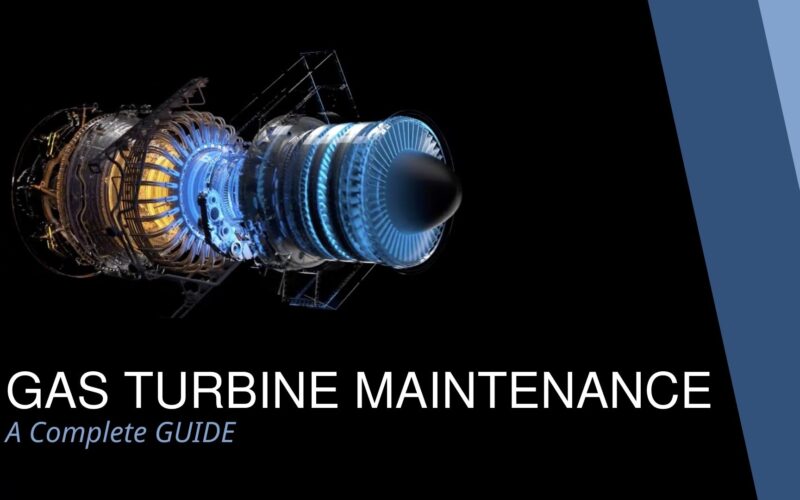In distributed energy applications, gas turbines are common. Facility operators have found it important to assure peak performance of gas turbines due to the ever-increasing need for larger peak loads in utilities. Regular maintenance is one method of ensuring the gas turbine’s efficient performance. This essay takes another look at industrial gas turbine maintenance. Are you curious about gas turbine maintenance? The following sections contain all of the answers.
Important Gas Turbine System Components
During maintenance, personnel inspects each component of the gas turbine system. Certain major components, however, require special care. Here is a partial list of some of them:
- Turbine
- Compressor
- Air intake
- Exhaust chimney
- Gearbox
- Combustor
- Electric generator
Internal Gas Turbine Conditions
Although the gas turbine has a simple operating principle, the equipment is made up of highly specialized components. Furthermore, these components have an exceptionally fine operating tolerance. Within the turbine, there is an even greater issue. GT components operate at intense temperatures. We now have turbines with intake temperatures of 1300 °C or more. This is exacerbated by the presence of corrosive gases and high-stress levels. Maintenance is about overcoming the obstacles posed by this tough environment.
Important Maintenance Practice for Filtering Inlet Air
Have you ever noticed a filtration unit in the gas turbine system’s air intake? Because of the dangers posed by particulates and other foreign materials, filtering intake air is a vital type of preventive maintenance. If the particles are not removed, they will accumulate and reduce turbine efficiency. A nut could, albeit inadvertently, guest posting sites make its way into the intake duct. You may be wondering what particles could be present in the intake air. If a facility is located near the water, the majority of these particles will be sodium chloride particles. Salt is a corrosive substance that can harm turbine blades. Salt can also attract dirt, which reduces turbine efficiency.
Maintenance strategy for gas turbines
A gas turbine maintenance strategy that keeps your fleet and turbine competitive involves the following components:
Understanding your assets and operational procedures
Understanding what assets are owned and their current state is the first step in developing a maintenance plan. An in-depth study of your organization’s operations will reveal loopholes that could expose you to unanticipated situations.
Setting up standard maintenance procedures
Maintenance that is consistent and reliable should be independent of the person performing the maintenance. Documentation will assist in getting everyone in the organization on the same page on the maintenance requirements of each asset.
Developing policies for dependability and maintenance
Maintenance for the sake of maintenance is not the purpose. Your company has business goals that must be articulated through policies. This lets everyone understand how their participation helps the company achieve its goals.
Using automated maintenance management software
Computerized Maintenance Management Software (CMMS) can be used to manage the time and resources required to maintain your equipment more efficiently and consistently.
On-time completion of needed maintenance
Time periods for completing maintenance tasks should not be too broad; otherwise, intervals may be too lengthy or too short depending on when a technician completes the task.
Gas turbine Control system
With the assistance of a turbine control system, the gas turbine control system can increase safety and security.GE Turbine control systems parts like IS200VRTDH1D, and IS200VVIBH1C are some examples.
Regular Gas Turbine Inspection
During these inspections, technicians collect data on system performance. Temperature, pressure, and vibration are examples of variables in this scenario. The original equipment manufacturer’s (OEM) baseline performance data comes in handy here. Technicians compare the baseline data to the data collected. Any deviations are recorded and scheduled for further study during the next shutdown maintenance session. These anomalies are evaluated and prioritized for repair based on their severity. The aim of this is to maximize the turbine’s availability. This is also an excellent time to install any performance-enhancing updates.
Detailed Examination of Hot GT Sections
Turbine components exposed to extremely high temperatures necessitate extra care during examination. The idea of looking more closely is that overheating can be a major issue. A borescope would be sufficient for an experienced technician to diagnose common overheating issues.
Gas Turbine Repairs
While inspecting turbines for issues is difficult, determining how to repair them is similarly difficult. Because most current components are technologically advanced, the traditional repair sector is having a difficult time. One cannot accomplish much without contemporary materials, inspection processes, and repair techniques. Consider cowl caps, fuel nozzles, and other combustion components. Advanced dimensional inspection must precede component repair.
Before welding any component, a nondestructive inspection must be performed.Because of the high temperatures of a turbine, specialized maintenance and repair technologies are essential. Methods of repair for mechanical loads and high operating temperatures include:
- Removing the old coating and applying a fresh one
- Welding for geometry reconstruction
- Heat treatment to improve the condition of the material
- Design and material modifications (advanced procedures)
For example, 25MW SGT-600 gas turbine from Siemens has been modified multiple times to meet the changing market demands for various aspects of the gas turbine.
The Advantages of GT Maintenance
The goal of proper gas turbine maintenance is to increase the facility’s long-term productivity. Following the established maintenance and repair methods will result in the following advantages:
- Enhanced system efficiency
- Gas turbine life-cycle extension
- Reduced maintenance costs Increased gas turbine availability
- Equipment reliability has improved
Also Read: A Guide to the Use of Technology in Learning Better



